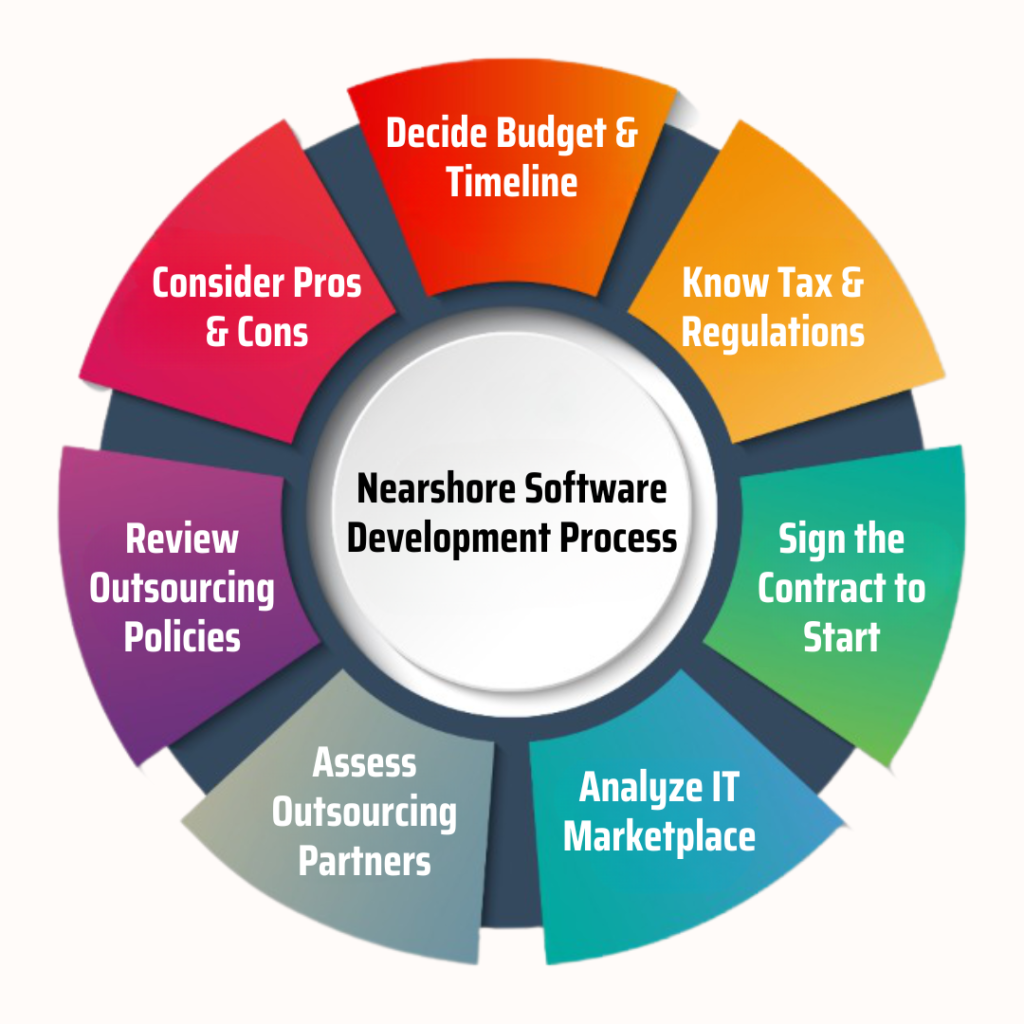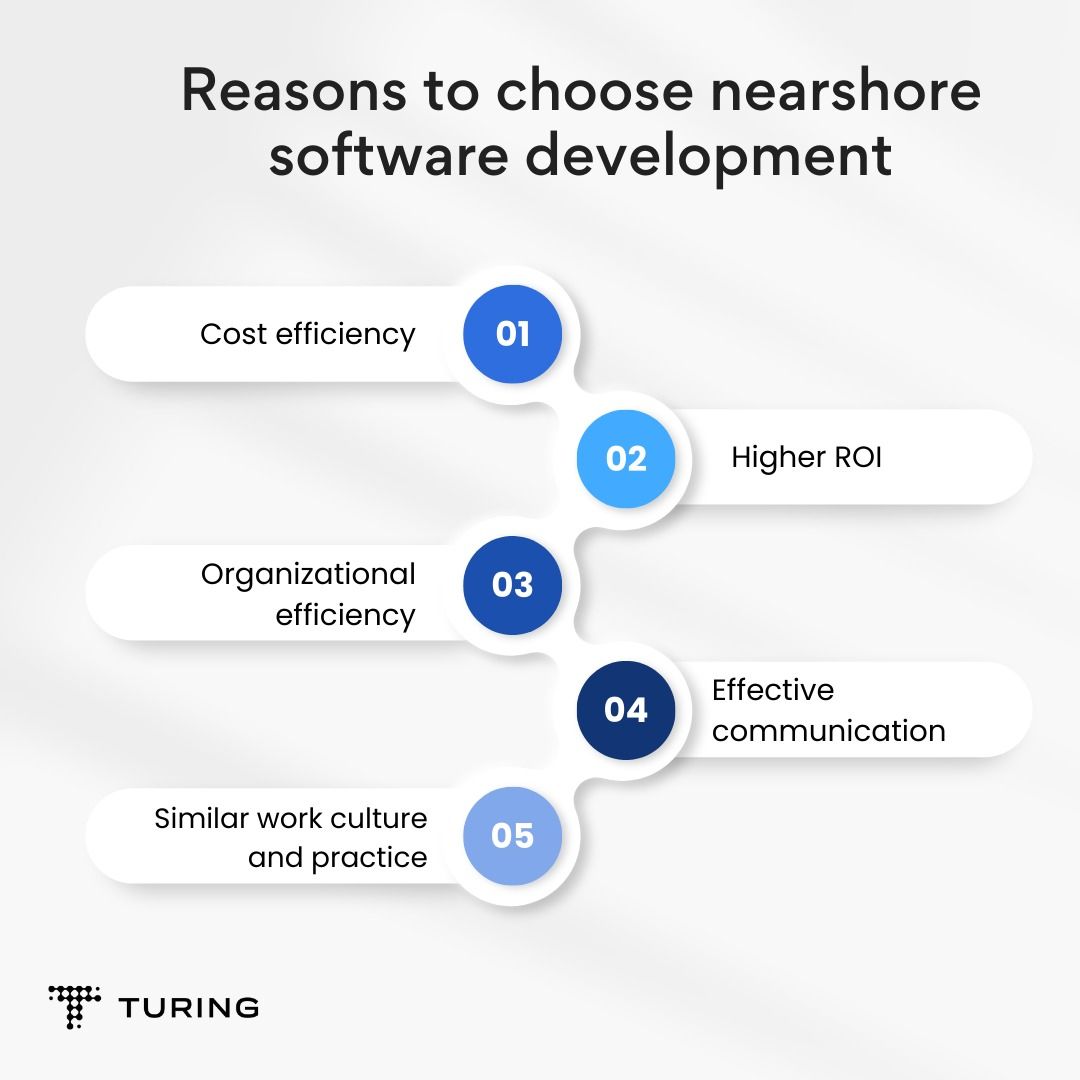Nearshore software development offers a strategic approach to outsourcing that brings numerous advantages to businesses. From cost-effectiveness to cultural compatibility, this model has become increasingly popular in the tech industry. Let’s delve into the intricacies of nearshore software development and discover how it can revolutionize your project outcomes.
In the following sections, we will explore key considerations for choosing a nearshore development partner, best practices for managing remote teams, challenges faced in this model, and real-life examples of successful nearshore projects.
Introduction to Nearshore Software Development
Nearshore software development refers to the practice of outsourcing software development tasks to a neighboring country or region with similar time zones, making communication and collaboration easier. This model has gained popularity due to its proximity, cultural similarities, and cost-effectiveness compared to offshore options.
Some benefits of nearshore software development include:
– Time zone alignment: Nearshore teams work in similar time zones, allowing for real-time collaboration and faster response times.
– Cultural affinity: Teams in nearshore locations often share similar cultural values and work ethics, leading to smoother communication and better teamwork.
– Cost savings: Nearshore development can be more cost-effective than onshore options, without sacrificing quality or communication.
Comparing nearshore software development to offshore and onshore models:
– Offshore development involves outsourcing to a distant country, often resulting in significant time zone differences and potential communication challenges.
– Onshore development occurs within the same country as the client, offering high levels of control and communication but at a higher cost.
– Nearshore development strikes a balance between the two, combining cost-effectiveness with proximity and cultural alignment, making it an attractive option for many organizations.
Factors to Consider When Choosing a Nearshore Development Partner

When selecting a nearshore development partner, there are several key criteria that should be taken into consideration to ensure a successful partnership. One of the crucial factors to evaluate is the cultural fit between your company and the potential nearshore vendor. Additionally, assessing the technical expertise and experience of the vendor is essential to guarantee the quality of the software development services.
Importance of Cultural Fit in Nearshore Partnerships
Cultural fit plays a significant role in nearshore partnerships as it impacts communication, collaboration, and overall project success. When the nearshore vendor shares similar values, work ethics, and communication styles with your company, it fosters a harmonious working relationship. This alignment can lead to better understanding, efficient problem-solving, and increased productivity throughout the development process.
Assessing Nearshore Vendor’s Technical Expertise and Experience
To ensure the nearshore vendor has the necessary skills and knowledge to meet your project requirements, it is crucial to evaluate their technical expertise and experience. Look for vendors with a proven track record of successfully delivering similar projects within your industry. Assess their capabilities, certifications, and technology stack to determine if they have the skills required to execute your project effectively. Conduct thorough interviews, review case studies, and ask for client references to validate their expertise and experience in software development.
Best Practices for Managing Nearshore Software Development Teams
Effective management of nearshore software development teams is crucial for the success of a project. Here are some best practices to consider:
Effective Communication with Nearshore Teams
- Establish clear communication channels: Utilize tools like Slack, Microsoft Teams, or Zoom for regular communication and updates.
- Set up regular meetings: Schedule weekly or bi-weekly meetings to discuss progress, roadblocks, and upcoming tasks.
- Encourage open communication: Create a culture where team members feel comfortable sharing ideas, concerns, and feedback.
- Provide detailed project documentation: Ensure that all team members have access to project requirements, timelines, and goals.
Strategies for Overcoming Time Zone Differences, Nearshore software development
- Overlap hours: Identify overlapping working hours between onshore and nearshore teams to facilitate real-time communication.
- Flexible scheduling: Implement flexible work schedules to accommodate team members in different time zones.
- Use asynchronous communication: Leverage tools like email, project management platforms, or shared documents for communication outside of overlapping hours.
Ensuring Transparency and Accountability in Nearshore Projects
- Define clear roles and responsibilities: Assign specific tasks to team members and establish accountability for deliverables.
- Track progress: Use project management tools to monitor progress, identify bottlenecks, and address issues promptly.
- Regular reporting: Require regular status updates from team members to ensure transparency and keep stakeholders informed.
- Feedback mechanisms: Implement feedback loops to gather input from team members and stakeholders, fostering a culture of transparency and continuous improvement.
Challenges in Nearshore Software Development

When engaging in nearshore software development, companies often face various challenges that can impact the success of their projects. It is crucial to identify these challenges and implement strategies to mitigate risks effectively.
Communication Barriers
One of the most common challenges in nearshore software development is overcoming communication barriers. Differences in time zones, language, and culture can lead to misunderstandings and delays in project delivery.
- Implement regular video calls and meetings to ensure clear communication among team members.
- Utilize collaboration tools such as Slack, Jira, or Trello to facilitate real-time communication and tracking of project progress.
- Encourage an open and transparent communication culture to address any issues promptly.
Talent Retention
Another challenge faced in nearshore software development is talent retention. With the rise in demand for skilled developers, companies may struggle to retain top talent within their development teams.
- Offer competitive salaries and benefits to attract and retain skilled developers.
- Provide opportunities for professional growth and development to enhance employee satisfaction and loyalty.
- Establish a positive work environment and company culture to promote employee engagement and retention.
Security Concerns
Security concerns are also a significant challenge in nearshore software development, especially when sharing sensitive data and information across borders.
- Implement robust security protocols and encryption measures to safeguard data during transit and storage.
- Conduct regular security audits and assessments to identify and address vulnerabilities proactively.
- Ensure compliance with data protection regulations and standards to mitigate security risks effectively.
Quality Assurance
Ensuring the quality of software products developed through nearshore collaboration can be a challenge due to differences in testing methodologies and standards.
- Establish clear quality assurance processes and standards to maintain consistency in product quality.
- Conduct regular code reviews and testing to identify and resolve issues early in the development cycle.
- Provide feedback and guidance to the development team to improve the overall quality of the software product.
Final Wrap-Up

In conclusion, nearshore software development presents a compelling option for companies looking to enhance their software projects. By leveraging the benefits of proximity, cultural alignment, and talent availability, organizations can streamline their development processes and achieve greater success in their endeavors. Embrace the power of nearshore software development and unlock a world of possibilities for your business.
